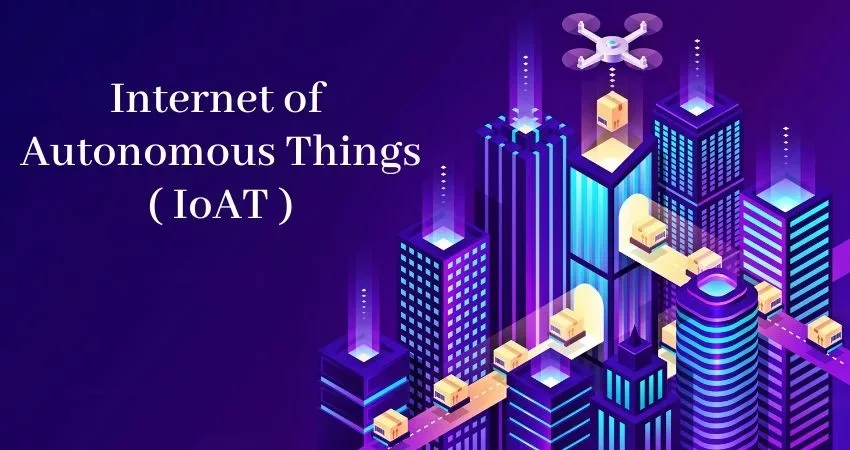IoT is a concept that has gained its foothold in the technology industry. Most companies have now implemented IoT in some form or the other in their operations. Alongside this, autonomous devices have been gaining some spotlight in recent years.
IoAT stands for Internet of Autonomous Things also called as Autonomous Things (AuT). It is a phrase used to identify the technology using autonomous devices without any human interference.
These devices are capable of functioning independently. They can interact with humans and other machines around them. IoAT is expected to bring computer systems into the physical world.
Autonomous devices need to interact with their surroundings to avoid accidents.
The term IoAT might not be so clear from the definition above. Let’s take a few examples to understand it better.
Autonomous cars are a well-known concept today. Companies are continuously working on perfecting them to suit all road and traffic conditions.
Taking the concept ahead one step, we now have a fleet of taxis without drivers. These are driverless taxis.
It is operated for an e-hailing company. These are companies that match passengers with vehicles and routes.
It is expected that robo-taxis would help reduce the problem of drunk driving, car parking, and traffic congestion on the roads.
Vehicle platooning is another application of IoAT using driverless/autonomous vehicles. In vehicle platooning, a number of vehicles travel the same route closely together.
The vehicles in the platoon communicate with each other for a smooth journey. The lead vehicle in the platoon determines the speed and direction.
The other vehicles follow the lead vehicle. All the vehicles have accurately synchronized braking and acceleration. These vehicles follow the instructions as received from the lead vehicle.
Vehicle platooning based on IoAT uses modern communication methods. These communication methods include Bluetooth, GPS, radar-sensing systems, etc.
Also Read: Examples of Industrial Internet of Things(IIoT)
Imagine not waiting in line at the check-out counter after shopping. Yes, that would soon be possible with autonomous shops. The first pioneer to venture into the market is Amazon Go.
Customers have to download the app of the store on their phones. They need to scan the QR code while entering the shop.
Customers can then take the products they need, off the shelves. While exiting the store, they need to scan the QR code again.
These stores use cameras to keep track of what products you pick up or keep back on the shelves. It maintains a virtual cart for this reason.
In the case of Amazon Go, you are sent an email receipt once you check out. You are charged on your Amazon account.
Water-based autonomous vehicles are used to get information from the surface of the ocean. One such example is of Saildrone.
Their vehicle SD – 1020 completed a circumnavigation of Antarctica. It collected data regarding the weather conditions in the region, which was previously not feasible to acquire.
The data collected by these water-based drones will help the weather analysts, do forecasting more accurately.
In general, with IoT, the devices are considered information generators and collectors. But, with the advent of autonomous systems, the edge devices might also be considered as information consumers.
These devices could also process the information locally instead of depending on the cloud.
This could lead to increased accuracy as the delays in the transfer of information will not hamper the working of the system.
Many scenarios that could happen if we redefine IoT as IoAT:
- Dependency on cloud servers will be reduced. The devices will interact with local machines and environments better.
- The devices will consume information locally to adjust their functioning.
- The devices will communicate with each other if the connectivity to their controller is lost. It will ensure that the systems will continue functioning despite losing connectivity.
- The devices will become more independent and intelligent. They will be able to identify and respond to unplanned scenarios using human-defined guidelines.
With the devices working together in teams, there might be devices that face problems while in operation. In such cases, these self-organizing devices will be able to align their actions to tackle the situation appropriately.
We can safely say that as technology moves towards IoAT, more intelligent devices will be able to address problems. The dependency on the cloud and even IoT implementation will be reduced.
You May Also Like to Read:

